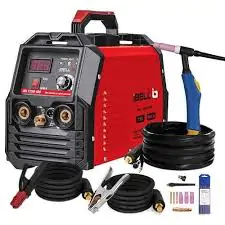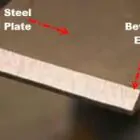TIG welding is the only way to make weld seams that are more stable and of better quality in terms of how they look and feel. TIG can also be used in many different ways: The method works with all metals and thin sheets, and it can be used for both out-of-position welding and root pass welding. Also, welding doesn’t make slag, the material doesn’t change much, and the process doesn’t make much spatter. It’s easy to see the benefits and the many ways it can be used. But what should you look for when you buy a mobile TIG device? Which ones are the most important? Here are five important things to think about:
Ignition with a high frequency
Most TIG welding is done with high frequency ignition (HF). This makes an arc between the workpiece and the electrode, even though the electrode is not touching the workpiece. In order to do this, the welding torch is held about 2 mm above the workpiece. When the trigger of the welding torch is then pulled, the arc starts to burn. Instead, it is better to use touchdown ignition: When the electrode touches the work piece, the arc starts. But there is a chance that the tungsten electrode will get into the weld pool and make it dirty. This is a big problem, especially when welding things that need to be done carefully, like in medical technology.
Touch HF is the best way to place the ignition quickly and accurately. For the welder, the process is pretty much the same as for touchdown ignition. The electrode is touched to the workpiece. After you lift it off, the lead time you set starts. The arc then starts right where the electrode touched the piece of metal. During ignition, no other method gives you more control.
As a standard feature, some welding systems can switch between HF and Touch HF ignition. So, depending on the application, the best ignition can be chosen.
The function of tacks (TAC)
“Tacking,” which is what TAC stands for, means “to attach.” If you want to join two different parts to a piece of work, you must first fix them in place. A pulse current is used to make the weld pool move back and forth. This makes it easier to join parts together without burning the edges. If you use TAC in spot welding mode, you can always make tacking points that are the same size. Because the welding spots are all the same, it is much easier to weld over. Another benefit of TAC is that the tacking function allows for low or, in the best case, no temper coloration and saves up to 50% of the time it takes to do tacking the old way.
Slowing down the flow
Only when TIG 4-step welding is done does the current have to go down. 4-step means:
- First step: Pressing the torch’s button starts the arc with starting current.
- Second step: When you let go of the trigger, the welding process begins with full welding current.
- Third step: Press the trigger again to start the arc going down.
- Fourth step: When you let go of it again, the welding process is done.
Welding in 4-step mode is better for the welder’s body because they don’t have to hold down the torch trigger all the time. During the welding process, the welder can change the main current by lowering or raising the lowering current. Changing the filler metal in the middle of the welding process is a good time to slowly lower or raise the current. “Slope 1” and “Slope 2” are two extra delay times that help here. But if you want to weld over a tacking point, you need a higher current than the main current. Because the material is stronger at this point, it takes more heat to do this.
Mains voltage tolerance
Power Factor Correction (PFC) makes up for the high mains voltage tolerance. This lets you get the best control over voltage fluctuations or too low input voltage, like those caused by multi-port distributors, long mains cables, or the use of generators on construction sites. Depending on the welding system, the devices can still give their full output even with 30 percent less voltage coming in. If, for example, only 160 volts are available, the machine uses PFC technology to keep the voltage constant so that the welder can still work with 170 or 210 amperes. This means that there is always enough energy to keep an arc going.
TIG Multi Connector (TMC)
The TIG Multi Connector is a standard interface that can be used to connect anything. It lets you control the welding system with remote controls and welding torches that have extra functions like a “Up/Down” button.
Of course, the different TIG tools have many other features, like an automatic shut-off or a gas test. All TIG machines can do electrode welding, which is one thing they all have in common. Because the devices are based on a digital resonance inverter, both processes can use the best output characteristic. What functions should your welding system have, given all the options?





